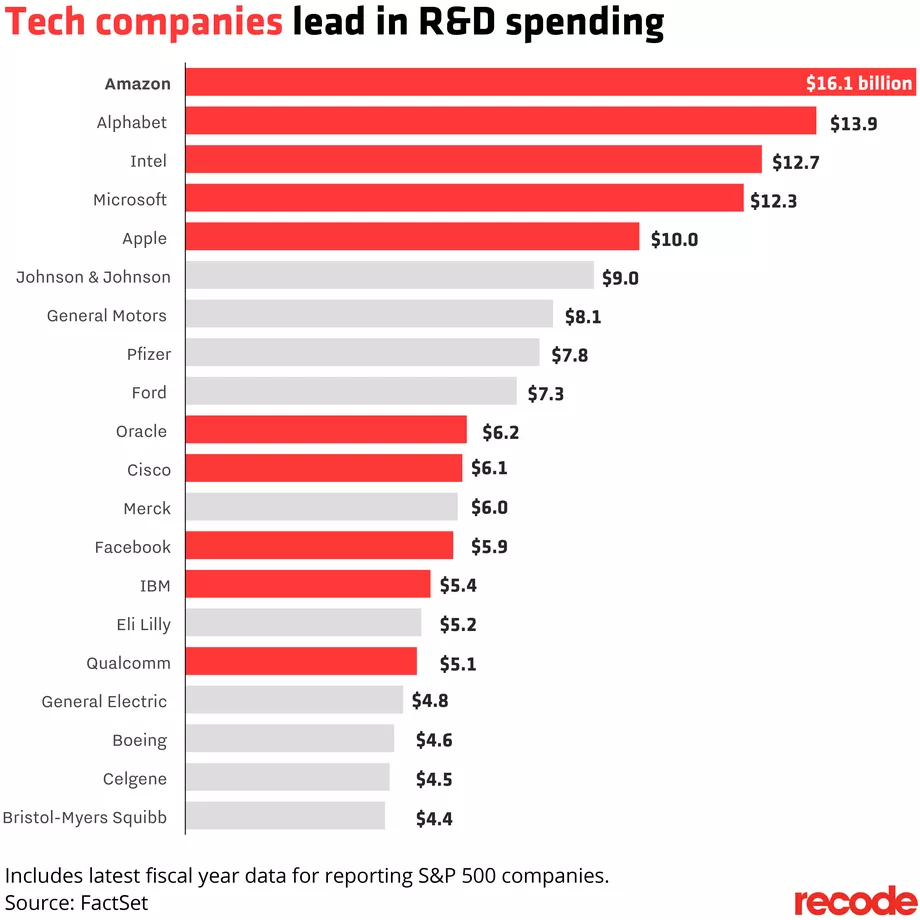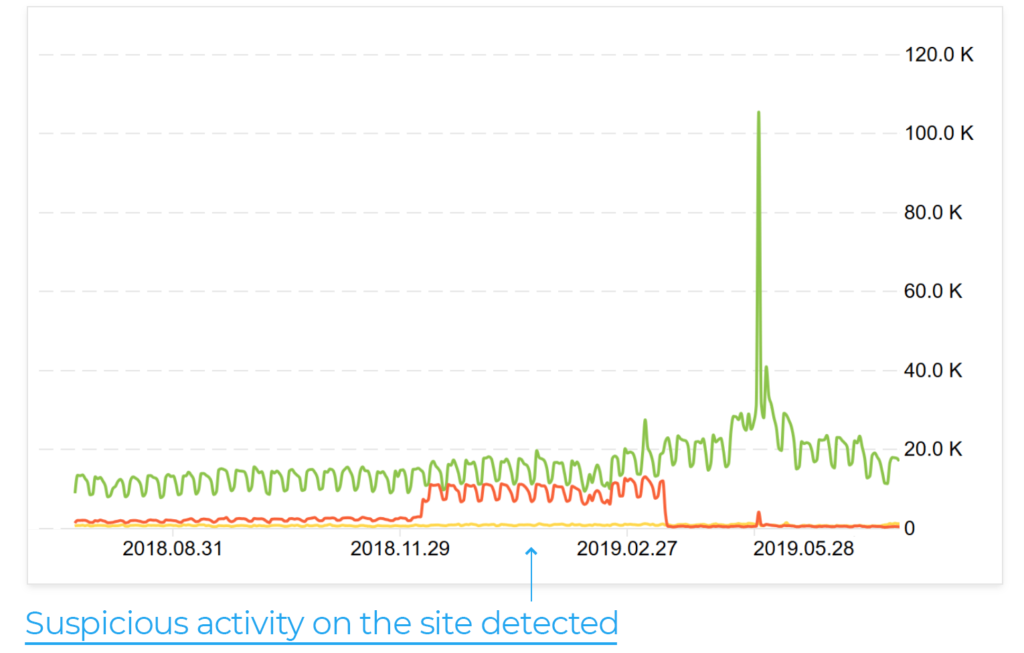How Technical SEO Can Change the R and D Game for Businesses

How Technical SEO Can Change the R and D Game for Businesses
The relationship between R and D and technical SEO can result in innovations that level the playing field between established businesses and ambitious startups.
R&D is a heavily resource-rich aspect of business that can also consume more time and energy in overcoming the challenges that they sought to overcome. It can also form a creativity drain that may even fail to produce any tangible results. However, R&D is an essential innovative tool in the development of new technologies, products, and market insights.
Meanwhile, SEO operates largely in the realm of marketing where R&D influenced technologies like machine learning and AI are beginning to enjoy heavier levels of influence. In an industry still dominated by the financial might of traditional companies, the influence of technology in SEO can help to provide smaller businesses and startups with a fighting chance.
Successful application of SEO can lead to lucrative levels of exposure for businesses, so it’s perhaps unsurprising that the use of AI to analyze search engine results pages and automated core algorithm updates are becoming more frequent within businesses.
While technical SEO can aid the growth of companies on an exponential scale, keeping up with various mysterious Google algorithm changes and search query processing in Search Engine Optimisation calls for the level of development that’s offered up by R&D platforms.
Developing Comprehensive SEO Research
Much of the research & development process within technical SEO is undertaken on an ad hoc basis by individuals. Thought pieces from individual search engine experiments are available all across the web where users have simply taken matters into their own hands and conducted their R&D projects.
The emergence of web development tools like the developer extension for Google Chrome has paved the way for more intuitive technical tools that can aid programs in offering up entire site audits and metadata troubleshooting.
Very few companies officially undertake their R&D work when it comes to SEO. This is because researching and developing technologies won’t immediately help to line the business’ balance sheet and there’s a risk that very little actionable insights will be available.
However, the array of web developer tools available, from ScreamingFrog’s crawlers to Google’s Schema.org Structured Data Testing Tool and everything in between, have given those conducting their R&D a solid foundation to build from in terms of SEO.
In particular, the Structured Data Testing Tool from Google helps researchers to test Schema structured data markup against known data from Schema.org that Google supports. This offers unparalleled insights into the quality of code being implemented.
Another excellent tool in the R&D process behind developing innovative technical SEO solutions can be found in the W3C Validator. While code validators might not seem like a seamless link to technical SEO, it’s imperative that information that’s been crafted in XHTML formats can be comfortably ported over to WordPress without any fundamental flaws.
The wealth of information and big data available in the R&D process for building new SEO tools has already led to some useful pieces of software. Pave AI, notably, utilizes the data from Google Analytics and converts it into actionable marketing insights by integrating information from advertising platforms like Facebook Ads and Adwords. By crossing a website’s data with over 16 million combinations to identify the best possible insights across a range of marketing channels.
This has helped to create a steady stream of intuitive platforms when it comes to technical SEO, and although R&D investments carry no guarantees of success, it’s no surprise that research and development spending is continuing to increase exponentially among the biggest companies in the world.
However, there’s a reason behind why a whole host of major technology companies are willing to spend billions of dollars in their R&D departments: research & development is one of the most effective ways of ensuring your long term growth as a company through innovation.
R&D helps businesses to actively explore technology, algorithms, or theoretical approaches to a problem without the threat of delivering a marketable service or product upon a deadline.
Research & development helps to open businesses up to new ways of approaching things. If research shows a faster way of getting processes done, it can help the company to cut costs in significant areas.
It’s also possible for R&D practices to bring a higher element of choice to businesses. This can be an invaluable asset when a company is presented with a complex problem to overcome.
One of the more successful examples of implementing R&D into a technical SEO platform can be found in OnCrawl – a tool that actively invests in research & development in a bid to provide innovative insights into search engines ahead of their competitors.
Website performance analysis tool Finteza has also successfully utilized R&D to build a leading audience analysis tool built on big data and advanced bot detectors.
The development of Finteza’s fake conversion detection system helps to further optimize the level of on-site SEO that a company undertakes, due to website owners gaining a greater understanding of where high-quality traffic and robot traffic are arriving from.
Technical Excellence Built on a Research Foundation
The beauty of research & development comes from the willingness of those optimizing their insights towards sharing their findings. For example, GitHub offers some great resources where users can share their insights, findings, articles, and academic papers on various research & development topics.
One of the most pertinent facets of research & development involves the documentation and reporting of findings. To accurately link R&D findings to the realm of SEO, the practitioner must have a fluent understanding of the technology that makes technical SEO tick. Artificial intelligence, machine learning, natural language text generation, and calculating normal values in a system may need to be discussed at length – this can’t be done if the individual conducting their R&D doesn’t know enough about the subject matter.
Intertwining SEO With Development
High-quality research can only take businesses so far. Practical tests and concepts help to put theories and proposed solutions into practice. With the SEO landscape ever-changing, the development of R&D-driven insights is imperative. How will you know if you’re on to a winning formula when Google keeps on moving the goalposts with algorithm updates? Getting to work on functional models will help to show your workings before further updates are required.
R&D should be better recognized as RD&T due to the level of testing that’s involved in the formulation of concepts into ideas. In the wide world of science, most studies only aim to show that hypotheses can work in theory – R&D takes this notion further in putting theoretical ideas into practice through rigorous tests.
R&D and Technical SEO: Growing Together
You don’t have to look far to see R&D and SEO working together to deliver high-quality products for marketing companies and businesses eager for exposure. Technical tools are so sought after for the helping hand they bring in keeping businesses more relevant than their competitors that many platforms dedicate large chunks of their budgets to developing the latest machine learning technology to provide more qualitative insights into marketing performance.
Notably, OnCrawl Labs have shown the benefits of R&D breakthroughs in their seminal anomaly detection and real-time indexing tools. Let’s take a look at how R&D and technical SEO unites to create new opportunities for businesses within both of these tools:
R&D Detecting SEO Anomalies
One of the key aspects of R&D in SEO involves gaining an understanding of how complex algorithms work. Learning how algorithms behave can help researchers to develop ideas as to how to adapt the resources at their disposal to create a tool or service that can help clients or customers.
The process of collecting data and interpreting algorithms is a key stage in the R&D cycle, where researchers can continue developing ideas until they’re ready to share results and transition into a more development-oriented stage in the cycle.
In OnCrawl’s R&D process for technical SEO solutions, the company set up its machine-learning algorithm to scout out and locate anomalies within complex datasets. To action this, the tool actively learns what a website’s performance looks like based on a series of metrics and then sets about searching for fluctuations that it’s learned to detect within its programming to find unusual elements of data.
In developing their algorithm, OnCrawl can return audit results over multiple crawls and detect instances where the website has over or underperformed.
An essential part of the R&D process for platforms looking to optimize the technical SEO performance of businesses and their websites involves researching and discovering space in the market for tools that can automate processes that could otherwise be deemed far too difficult or time-consuming for humans to do themselves.
Looking at search engine rankings is a good example of a metric of algorithmic analysis. For instance, many SEO practitioners are aware that website rankings fluctuate over time, but monitoring this level of performance can be bewildering when done manually.
By utilizing machine learning programs that can learn and understand fluctuations in search rankings, as shown by platforms like Google Search Console, businesses and website owners can set themselves up to receive notifications when an abnormal fluctuation occurs when the algorithm sees an erratic ranking movement that’s completely different from the metrics it’s already learned.
The insights provided by this R&D tool has the power to keep businesses better informed of their SEO performance while saving valuable working hours in getting to the bottom of faltering search rankings that could potentially have been mitigated long ago.
R&D Blueprints For High-Performance SEO
The beauty of developing R&D processes for insights into technical SEO is the fact that it opens the door to goodwill data sharing. The sad fact of life is that not all of our ideas and hard work pay off. But when a concept doesn’t quite become a reality, there could always be an opportunity for someone somewhere to pick up on your hard work and finish the job off.
Of course, in a highly competitive SEO landscape, the sharing of work and ideas can be kept closed off from the public. Incomplete R&D testing could mean multiple things. For instance, the final product may only work intermittently, or it could still be too unreliable for public use. There’s also the possibility that its performance and possible applications haven’t yet been fully recorded.
If an R&D project is shelved as ‘unfinished’ and thus available for public consumption, there’s a possibility that a good technical idea can be picked up by other users and developed into a fully functioning prototype. This is where R&D excels away from any other aspect of a business. Research & development can be shared to achieve common goals.
However, due to the complexity of R&D projects, and their potential value to the scaling of companies, many unfinished projects are kept private in a bid to eventually return to development when either the technology available to conduct with research surrounding an algorithm develops or the machinery to develop an idea into a product evolves to a suitable level.
However, there is a range of technical SEO R&D organizations, like the aforementioned OnCrawl, that choose to make their R&D work available to the platform’s users to invite their work being picked up upon by individuals who share the same interests and skillsets.
Research & development is always at the source of any technological innovations. Whether they occur in technical SEO or beyond, researching subject matters and developing ideas into fully functioning prototypes is what helps to bring concepts to life.
In the highly competitive world of SEO, there’s plenty of ground to make up for developing businesses, and lots of emerging technology like machine learning and AI in which to make ground on more established rivals.
With a strong emphasis on technical SEO R&D, businesses stand a fighting chance to go into battle with esteemed competitors and outsmart them in the race for online exposure.
Source: https://dzone.com/articles/unrivalled-research-amp-development-how-technical



